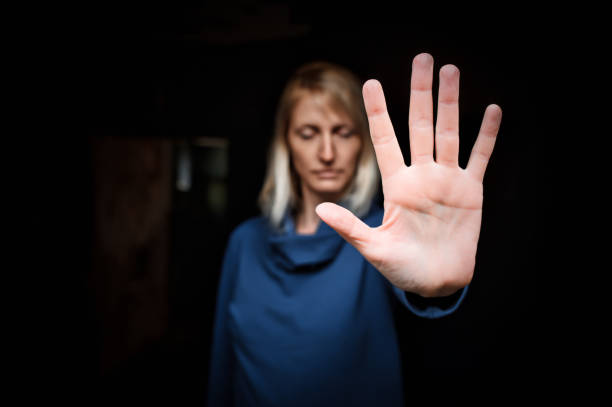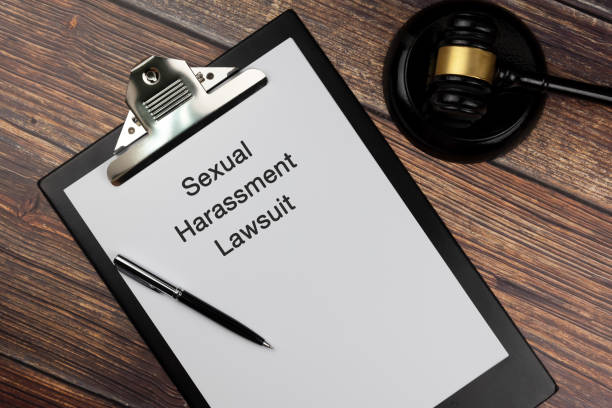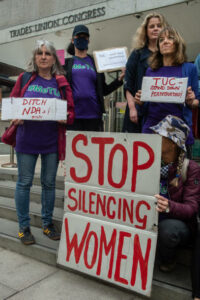
This article is written by Gary Pinchen of A Whole New Approach Pty Ltd. Gary Pinchen is not a lawyer nor is AWNA a law firm. We are extremely experianced workplace advisors for 20 plus years. The aricle and others that we publish is to help you gain knowledge and to work out what you may want to do. Harassment and assault are serious matters. I encourage anybody who have concerns to contact the police, lawyers and medical practioners for assistance. Equally we are happy to take your call. We are here to help.
What’s the difference?
Sexual Assault and Sexual Harassment are commonly used interchangeably, being considered to have the same meaning, but they are different in the eyes of the law and at their core definitions. Sexual assault and sexual harassment are two different occurrences, they can occur at the same time and do have similarities, however with vastly different legal implications. is a conplex question that we want to explore now
Sexual Harassment has a broader meaning – it includes any conduct of a sexual nature. This can include asking personal sexual questions, any sort of sexual hint or inuendo.Sexual Assault is more specific, being unwanted or inappropriate touching or an uninvited kiss, or performing sexual acts without someone’s consent, forcing a sexual encounter and rape.
Sexual assault can be more identifiable and obvious, however sexual harassment can be much more subtle and doesn’t have to involve any physical contact. It does not have to be in person and can be via an online message.Sex assault however is unwanted or forced sexual activity with no consent, but sexual harassment is unwelcome sexual advance, unwelcome requests, or any other unwelcome conduct of a sexual nature.
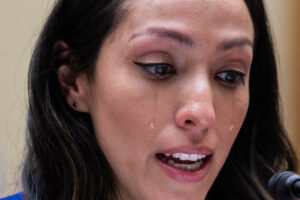
Both can occur at the same time
Sexual harassment and sexual assault can occur at the same time, sexual assault is usually always sexual harassment, but sexual harassment is not always sexual assault. For example, if an employee forced another employee to kiss them, this would be considered both sexual harassment and sexual assault occurring at the same time.
The two have different complaint processes within Australia, and this can differ within each state. Sexual harassment when not involving any sexual assault is not a crime in Australia and there is no obligation to report it to the police. However, it is still recognised as illegal under various different legislative acts throughout Australia including the Fair Work Act 2009 (Cth).
Sexual assault is a crime
Sexual assault is a crime and can /should be brought to the attention of the police. Having provided sufficient evidence legal authorities can press charges against an accused individual. If someone is found guilty of sexual assault, they are punished by the law.
Sexual harassment claims can give victims compensation for any psychological injuries, physical injuries, loss of earnings, and any other forms of damages. This process is not a criminal trial and is considered a civil matter.
In workplace sexual harassment a sexual harassment complaint is brought against both the individual who is accused of sexually harassing the victim and the company they are both employed or contracted by. Companies can be found vicariously liable for sexual harassment occurring in their workplace. Vicarious liability means a person or company is held responsible for an action or actions committed by someone else or their employees.
In criminal sexual assault cases if the parties involved where employed by the same company or the events took place in a workplace setting, the company is not found vicariously liable as it is charges purely against the individual.

Sexual harassment is prohibited in many areas of life
Sexual harassment is prohibited in many areas of life, Part 6 of the Equal Opportunity Act set sets out where sexual harassment is prohibited. This includes, in the workplace, industrial organisations, educational institutions, local governments, sporting clubs and organised social groups, amongst some of them.
Due to the different definitions and different acts of the two, primarily that sexual assault is a crime, the main difference between the two is the outcome of each of the proceedings. The two different proceedings also means that the standard of proof required in sexual harassment is lower than in sexual assault cases. As sexual assault is a criminal case, the standard of proof is beyond reasonable doubt, in comparison to sexual harassment the standard is on the balance of probabilities.
This means that the event was more likely to have occurred than not occurred. Applicants do not need as much evidence as required in sexual assault cases. In Sexual assault criminal charges, criminal law does not provide any sort of remedy or compensation for assault with the victim punished with the law.
Sexual Harassment is a civil case and is considered a form of discrimination as seen in the case of Birch v Wesco Electrics (1966) Pty Ltd (2012) 218 IR 67, the court determined sexual harassment constitutes sex discrimination. The basis being if someone was of a different gender – would they have experienced the sexual harassment. For example, if a straight male colleague is asking a female colleague about her sexual life and leaving her inappropriate notes on her desk, would he have done this towards a male colleague. The answer would be no. If the colleague was not a female this would not have occurred.
Victims can be compensated
Theses aspects of Sexual Harassments allow victims to be compensated for any injuries or losses suffered from being subjected to the harassment. Their employer is vicariously liable, particularly in cases where companies do not take enough action to prevent this in the workplace or do not conduct proper investigations if a complaint is raised with the company. This compensation for detriment caused to the victim is not seen in criminal cases. In a criminal case, where a guilty determination is made the offender will either be fined which goes to the government or will be sent to prison.
The case of Kerkofs v Abdallah (Human Rights) [2019] VCAT 259, the respondent called the victim names such as “baby”, “honey” and “sexy” in the workplace. The respondent also hopped into bed with the victim and touched her sexually without her consent after she had collapsed at work, due to her illness. This was classified as a sexual assault which then in turn also meant it was also considered sexual harassment. The victim lodged a complaint at her workplace; however, the employer was found to have conducted an improper and insufficient investigation into the complaint and was vicariously liable for the incident.
The victim was awarded $150,000 damages, this substantial sum took into consideration that the respondent was in a position of authority over the victim, the insufficient investigation of the company and the victims’ resulting psychiatric injuries from the harassment.

Victim received $330,000 in damages
In the case of Collins v Smith [2015] VCAT 1992 the Applicant was awarded $330,000 in damages following the victim receiving sexually explicit text messages and phone calls, experiencing unwelcome sexual touching, unwelcome attempts at kissing, requests for sex and sexual favours in exchange for work benefits. The respondent was a superior to the Applicants in their workplace and took advantage of his position of power to make these unwelcome requests and comments.
The company was found vicariously liable for the sexual harassment occurring in the workplace by one of their employees. The large sum of damages included compensation for the psychiatric injuries from the incidents, past and future loss of earnings of the Applicant being unable to work and further compensation for the stress and strain it placed on her.
In Mathews v Winslow Constructors (Vic) Pty Ltd [2015] VSC 728, the Supreme Court of Victoria, awarded the victim $1,360,027 in compensation for sexual harassment that occurred in her workplace. The victim was shown pornographic material in the workplace and asked if she could replicate the material, she was repeatably questioned about her sexual activity and colleagues would mimic sexual acts on her and grab her, amongst various other comments and incidents occurring in the workplace.
There were also instances of rape which occurred from one of her colleagues, although she may have been able to take criminal charges, the sexual harassment case granted her compensation for the psychiatric injuries and physical injuries she suffered and economic losses both past and future. As some of the occurrences were a sexual assault, this did mean that they fell under sexual harassment along with the other extended sexual harassment conduct that occurred in the workplace.
Sexual innuendos
Further in the case of Lee v Smith & Ors [2007] FMCA 59 the respondent left their number in the applicants writing pad, made various sexual innuendos towards her, requested sex and made various threats when she rejected these advances. The respondent would frequently stare at the Applicant in a sexual way making her feel highly uncomfortable in her workplace. The respondent continued to leave notes with sexual messages on the applicant’s desk and sexually touched the applicant – therefore sexually assaulting her.
The respondent was a superior to the Applicant and leveraged his position of power over her in the workplace. The applicant was awarded $100,000 in damages, compensating her for the detriment suffered in the workplace. The respondent was found liable for the sexual harassment, rape, and harassment following rape, and the employer was found vicariously liable. This was an unlawful breach of sexual harassment and victimisation under the Sex Discrimination Act 1984 (Cth).

Landmark sexual harassment case
The landmark case for damages was the case of Richardson v Oracle Corporation Australia Pty Ltd [2014] FCAFC 82 (‘Richardson’). Prior to this case victims would receive between $10,000 to $20,000; this has now increased following the case of Richardson, making the detriment cause by sexual harassment, particularly in the workplace, more recognisable in the courts. This has set a precedent allowing an applicant to claim a significantly higher amount in damages when bringing a case of sexual harassment to the courts.
In this case – Richardson received various humiliating comments and sexual advances from the respondent. This included comments claiming the two had been married in a past life, and comments about what it would be like if the pair had sex. Richardson was awarded $100,000 in general damages, for the pain, suffering and loss of enjoyment in life because of the sexual harassment.
This compensation is not seen in criminal cases, individuals can bring both criminal and civil cases for the one set of circumstances. This allows victims to be properly compensated for the detriment caused to them following an individual’s wrongful actions towards them and a company’s inaction or inattention to protect and stop sexual harassment in the workplace.
Case in the supreme court
In the case of State of Victoria v McKenna [1999] VSC 310, there was 3 alleged acts of sexual harassment brought to the Victorian supreme court. The court found that the first two complaints were clear sexual harassment claims where the respondent pulled the victim onto his lap requesting sexual acts from her. These were found to be of an obvious sexual nature, meeting sexual discrimination against the victim. In the third incident the victim was dragged towards a holding cell and the predator attempted to lock her in the cell.
There was debate whether this action was an action of assault rather than sexual harassment. However, the court found that this was not the case as this event occurred as a part of a continuous series of events. Therefore, alongside the previous incident the perpetrator had subjected the victim to this act and therefore the final incident became sexual in nature. All these circumstances were found to be sexual harassment and the final incident met the sexual element which meant it qualified as a sexual assault, therefore also sexual harassment.
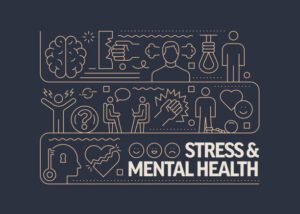
Key differences of sexual harassment and sexual assault
The key differences of sexual harassment and sexual assault that is important for applicants / victims to understand. Particularly when occurring in the workplace is the compensation claimable, and that an employer can be held vicarious liable.
Sexual harassment does not need to be sexual assault, any small comments, sexual references, sexual questions, or inappropriate behaviours, particularly when reoccurring constitutes sexual harassment. The detriment of these incidents occurring in spaces such as the workplace is recognisable in the courts and victims can claim these damages for the injuries suffered.
Conclusion to: Sexual Harassment vs Sexual Assault. What’s the difference?
As stated a Whole New approach are not lawyers but Australia’s leading representatives, commentators and researcher’s on workplace matters. We have been fighting sexual harassment since 2004. Achieving zero tolerence of sexual harasssment in the workplace is a long-term goal that requires a commitment from all levels of an organization. While we have come a long way, we still have a ways to go. Together, we can make the workplace better for everyone by pushing for change and working towards it. Let us continue to strive towards a future where sexual harassment is not just a buzzword, but a reality. Feel harassed, feel being forced to resign, or dismissed because of who you are call us now.
Call 1800 333 666 for advice, its prompt and confidential.
We can represent you at the Fair work Commission and the Australian human Rights Commission, (AHRC). Also the various equal opportunity, discrimination boards and human rights commissions around the country.
Articles similar to: Sexual Harassment vs Sexual Assault. What’s the difference?
Are unwelcome comments sexual harassment what can i do? click here
Sexual harassment and harassment what’s the difference click here





